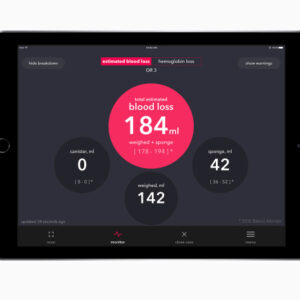Siddarth Satish ’06 is part of a team at Stanford working on the USAIDS/Gates Foundation project Saving Lives at Birth. The group is one of 70 finalists in the competition for their project titled “Low-Cost Mobile Platform for Real-Time Monitoring of Blood Loss.” The team, co-advised by professors Michael Hsieh and Mark Gonzalgo of Stanford University and David Rempel from University of California, San Francisco, is in the final stage of the competition was asking readers to vote for their project at www.savinglivesatbirth.net. To read more, look under “finalists.” Satish sends greetings to the Harker community and his thanks for your support!
Description of Project
Obstetric hemorrhage is the leading cause of maternal mortality in developing countries, with over 95 percent of the 350,000 worldwide annual deaths occurring in Africa and Asia. Real-time monitoring of maternal blood loss is crucial in allowing for preventive interventions within a critical time frame. Visual estimation of blood loss (EBL) by health workers is a widely adopted monitoring practice, but its accuracy is severely limited by human error and insufficient training and attention; health workers miss the onset of post-partum hemorrhage in over 80 percent of cases when visual estimation is used. Although spectrophotometry provides a gold standard for quantifying blood loss, it is unsuitable for real-time use and suffers from high resource costs. To address this gap, we are developing a low-cost mobile platform capable of accurate, real-time blood loss monitoring in obstetric point-of-care settings. The platform consists of a novel computer vision-based application installed on an inexpensive camera phone. Mounted to an overhead surface, the device captures a series of images of the patient table and calculates blood coverage, volume, and spread rate. Accounting for such factors as BMI and term of pregnancy, the application continuously tracks blood loss and alerts obstetric staff to the onset of hemorrhage. The advantages of the platform are (1) high accuracy at low cost, (2) automated monitoring in real-time, and (3) low barriers to staff education and adoption given high mobile device penetration in developing countries. This contributes an inexpensive, portable solution towards eliminating the most preventable yet most widespread cause of maternal mortality.





![[UPDATED] Voting now open for 3M Young Scientist Challenge Improving Lives Award harker-logo-default](https://news.harker.org/wp-content/uploads/2016/08/harker-logo-default-300x300.png)



![[UPDATED] Harker team qualifies for Siemens Competition national finals Garg_Tian_Siemens](https://news.harker.org/wp-content/uploads/2017/11/Garg_Tian_Siemens-300x300.jpg)
